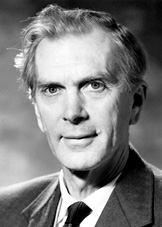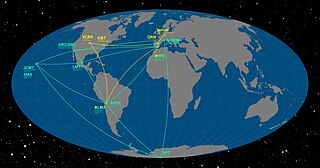
Astronomy is a natural science that studies celestial objects and phenomena. It uses mathematics, physics, and chemistry in order to explain their origin and evolution. Objects of interest include planets, moons, stars, nebulae, galaxies, and comets. Relevant phenomena include supernova explosions, gamma ray bursts, quasars, blazars, pulsars, and cosmic microwave background radiation. More generally, astronomy studies everything that originates outside Earth's atmosphere. Cosmology is a branch of astronomy. It studies the Universe as a whole.
Astrophysics is the branch of astronomy that employs the principles of physics and chemistry "to ascertain the nature of the astronomical objects, rather than their positions or motions in space". Among the objects studied are the Sun, other stars, galaxies, extrasolar planets, the interstellar medium and the cosmic microwave background. Emissions from these objects are examined across all parts of the electromagnetic spectrum, and the properties examined include luminosity, density, temperature, and chemical composition. Because astrophysics is a very broad subject, astrophysicists apply concepts and methods from many disciplines of physics, including classical mechanics, electromagnetism, statistical mechanics, thermodynamics, quantum mechanics, relativity, nuclear and particle physics, and atomic and molecular physics.

Sir Martin Ryle was an English radio astronomer who developed revolutionary radio telescope systems and used them for accurate location and imaging of weak radio sources. In 1946 Ryle and Derek Vonberg were the first people to publish interferometric astronomical measurements at radio wavelengths. With improved equipment, Ryle observed the most distant known galaxies in the universe at that time. He was the first Professor of Radio Astronomy at the University of Cambridge, and founding director of the Mullard Radio Astronomy Observatory. He was Astronomer Royal from 1972 to 1982. Ryle and Antony Hewish shared the Nobel Prize for Physics in 1974, the first Nobel prize awarded in recognition of astronomical research. In the 1970s, Ryle turned the greater part of his attention from astronomy to social and political issues which he considered to be more urgent.

Eleanor Margaret Burbidge, FRS is a British-born American astrophysicist, noted for original research and holding many administrative posts, including Director of the Royal Greenwich Observatory.

The Indian Institute of Astrophysics (IIA), with its headquarters in Bangalore, is a National Research Institute of India. IIA conducts research primarily in the areas of astronomy, astrophysics and related subjects. It is widely recognised as a leading research center for astrophysics in India.

The Physical Research Laboratory (PRL) is a National Research Institute for space and allied sciences, supported mainly by Department of Space, Government of India. This research laboratory has ongoing research programmes in astronomy and astrophysics, atmospheric sciences and aeronomy, Earth sciences, Solar System studies and theoretical physics. It manages the Udaipur Solar Observatory and is located in Ahmedabad.

The Toruń Centre for Astronomy is an optical and radio observatory located at in Piwnice, about 15 km north of Toruń, Poland. It houses two single-dish antenna telescopes, 32 metres and 15 metres in diameter, as well as the largest Polish optical telescope – 90 cm Schmidt-Cassegrain camera. The facility is operated by the Nicolaus Copernicus University. Also, photometry using 60 cm Cassegrain telescope is made and radio measurements of the Sun at 127 MHz frequency have been recorded on a daily basis since 1958 using a 23 m interferometer.
The Kapteyn Astronomical Institute is the department of astronomy of the University of Groningen in the Netherlands.
The Kavli Foundation, based in Los Angeles, California, is a foundation that supports the advancement of science and the increase of public understanding and support for scientists and their work.

The Department of Physics at Durham University in Durham, England, is a large physics and astronomy department involved in both undergraduate teaching and scientific research. In the most recent subject review report by the Quality Assurance Agency (QAA) for Higher Education, the department achieved maximum marks (24/24) and in the 2001 Research Assessment Exercise the department retained a Grade 5A rating. In addition, the department's research into Space Science and Astrophysics was rated as number one in Europe and fourth in the world by Thomson Reuters from its Essential Science Indicators (1998–2008).

The Astronomical Institute of the Czech Academy of Sciences was founded in 1954. Currently, it has its headquarters in Ondřejov observatory, roughly 35 km south-east from Prague and its director is Vladimír Karas.
This enclave of scientific research is officially known as Astro Space Center of PN Lebedev Physics Institute, and is under the purview of the Russian Academy of Sciences. Generally speaking, the space center's mission focuses on astrophysics, which includes cosmology. The emphasis is on accomplishing basic research in this science. The research leads into exploring the composition, and structure of astronomical objects, interstellar and interplanetary space along with exploring how these evolved.
The Institute of Space and Planetary Astrophysics, also known as by its abbreviation ISPA, is a premier and national research institute of the University of Karachi, engaging the theoretical and applied studies and research into topics pertaining to Astronomy, Astrophysics, Satellite Communication, Space Flight Dynamics, Atmospheric Science, Climatology, GIS & Remote Sensing and other related subjects. The institute has network of various mathematics and physics laboratories located in various universities of Pakistan, while it operates a single Karachi University Astrophysics Observatory.
Computational astrophysics refers to the methods and computing tools developed and used in astrophysics research. Like computational chemistry or computational physics, it is both a specific branch of theoretical astrophysics and an interdisciplinary field relying on computer science, mathematics, and wider physics. Computational astrophysics is most often studied through an applied mathematics or astrophysics programme at PhD level.

The Event Horizon Telescope (EHT) is a large telescope array consisting of a global network of radio telescopes. The EHT project combines data from several very-long-baseline interferometry (VLBI) stations around Earth with angular resolution sufficient to observe objects the size of a supermassive black hole's event horizon. The project's observational targets include the two black holes with the largest angular diameter as observed from Earth: the black hole at the center of the supergiant elliptical galaxy Messier 87 (M87), and Sagittarius A* at the center of the Milky Way.
Richard Battye is a cosmologist, theoretical physicist and former first-class cricketer. He is currently the Professor of Cosmology at the University of Manchester and has been the associate director (science) in the Jodrell Bank Centre for Astrophysics since 2015.
![Institute of Theoretical Astrophysics a department of the [[University of Oslo]]](https://upload.wikimedia.org/wikipedia/commons/thumb/7/78/Svein_Rosselands_hus_Blindern.jpg/320px-Svein_Rosselands_hus_Blindern.jpg)
The Institute of Theoretical Astrophysics is a research and teaching institute dedicated to astronomy, astrophysics and solar physics located at Blindern in Oslo, Norway. It is a department of The Faculty of Mathematics and Natural Sciences at the University of Oslo. It was founded in its current form by Svein Rosseland with funding from the Rockefeller Foundation in 1934, and was the first of its kind in the world when it opened. Prior to that, it existed as the University Observatory which was created in 1833. It thus is one of the university's oldest institutions. As of 2019, it houses research groups in cosmology, extragalactic astronomy, and The Rosseland Centre for Solar Physics, a Norwegian Centre of Excellence.
Douglas Cameron Heggie is a Scottish applied mathematician and astronomer, formerly holding the Personal Chair of Mathematical Astronomy at the School of Mathematics at the University of Edinburgh. His main research interests are in stellar dynamics.














![Institute of Theoretical Astrophysics a department of the [[University of Oslo]]](https://upload.wikimedia.org/wikipedia/commons/thumb/7/78/Svein_Rosselands_hus_Blindern.jpg/320px-Svein_Rosselands_hus_Blindern.jpg)